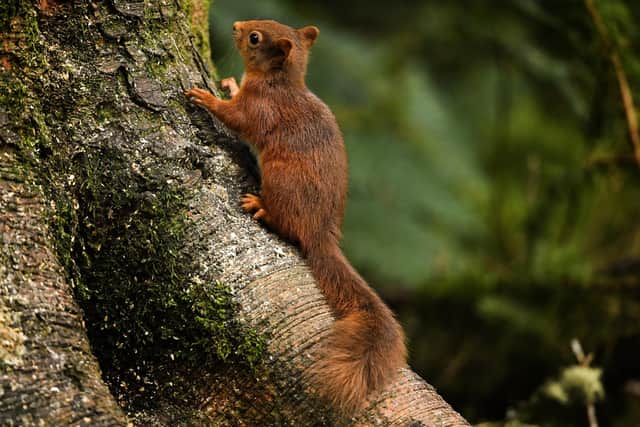Appeal for vigilance after squirrelpox death in Fife is first north of Scotland’s central belt
and live on Freeview channel 276
The case was confirmed on the outskirts of Dunfermline after a post-mortem examination of a red squirrel by the University of Edinburgh’s Royal (Dick) School of Veterinary Studies. The animal was posted in by a member of the public who found it whilst walking in woodlands on the northern outskirts of the city last month.
It had ulcers and scabs around the eyes and mouth, both of which were confirmed as pox virus carried by grey squirrels which does not affect them but can be rapidly lethal when passed to red squirrels. Symptoms include ulcers, scabs and weeping lesions on the face, paws and genitalia, all of which can prevent reds from eating, drinking or moving. As a result, it is usually fatal within two weeks and an outbreak can cause local populations to crash.
Advertisement
Hide AdAdvertisement
Hide AdLiam Wilson, from the Royal (Dick) School of Veterinary Studies said: “This is a worrying development for red squirrels in Scotland, as this case north of the Central Belt may be the prelude to squirrelpox expansion both locally and further northward, although more investigative work is required to fully assess this risk.


“This case also highlights the key role members of the public have in wildlife conservation, as this case was detected from the submission of a dead red squirrel by a member of the public.”Any members of the public come across further dead red squirrels in and around Dunfermline, these can be posted to the Royal (Dick) School using the guidelines here.
The first known outbreak of squirrelpox in Scotland occurred in 2007 near Lockerbie and since then the disease has arisen in various red squirrel populations across south Scotland. However, this is the first time that a case has been confirmed north of Scotland’s Central Belt.
In the face of this new threat, conservation charities are asking for locals to remain vigilant and take action to help reduce the spread of the disease.
Advertisement
Hide AdAdvertisement
Hide AdNicole Still, Saving Scotland’s Red Squirrels (SSRS) Programme Manager, Scottish Wildlife Trust, said: “We are extremely concerned about this latest news and are asking the local community in Dunfermline to take immediate action and protect red squirrels by taking in all garden and woodland wildlife feeders for the next month, as these can contribute to the spread of the disease from greys to reds and between reds once infected.
“We are also asking for everybody to keep a close eye out for, and take photos of, any sick looking red squirrels and email these into us, as well as report all sightings of both species to our website to inform local efforts.”
Scotland’s red squirrel populations are under threat from the spread of the invasive non-native grey squirrel which, along with carrying the squirrelpox virus, also outcompete red squirrels for food and habitat. Greys were first introduced to the UK from North America by the Victorians and have since displaced red squirrels in most of England and Wales, with more than 75% of the UK’s total remaining population residing in Scotland today.
Comment Guidelines
National World encourages reader discussion on our stories. User feedback, insights and back-and-forth exchanges add a rich layer of context to reporting. Please review our Community Guidelines before commenting.